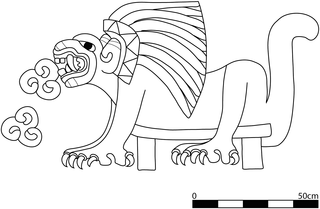Teotihuacans kept pumas in captivity and fed them human sacrifices as part of ancient rituals

The ancient Teotihuacan people in Mexico kept carnivorous animals like pumas, wolves, jaguars and eagles in captivity around 1,000 years earlier than it was previously thought, researchers have suggested. The team of US scientists also say they have evidence to suggest the pumas were fed humans in sacrificial rituals.
Published in PLOS One, the researchers note that Spanish conquerors in the 16<sup>th century provided detailed accounts of a great zoo in the Aztec capital of Tenochtitlan (14<sup>th-16<sup>th century), dedicated to the breeding of beasts like wolves, pumas, lynxes, various birds and rattlesnakes. "By this time the Aztecs were successfully capturing and even breeding wild animals in the capital, which hosted 300 specialists dedicated to their care," they wrote.

However, exactly when such animal management programmes first were implemented in Mexico was unknown. Teotihuacan was one of the largest pre-Hispanic cities. Between the first and sixth centuries AD, it was one of the largest urban cities in Mesoamerica – home to around 25,000 people (although some estimates put this figure far higher).
During excavations that took place between 1998 and 2004, researchers found human and animal remains in the Pyramid of the Sun and Pyramid of the Moon. This provided evidence of one of the largest known animal sacrifices in Mesoamerica and researchers were particularly interested in the bones of carnivores as little information about their place in society was known before this.
The team analysed the remains to discover some of the carnivores had been kept in captivity, with stress on bones indicating where they had been tied up, or abnormal growth and infection suggestive of them being kept close together. Further to this, the team carried out isotope analysis to work out what sort of foods these animals had been fed.
They looked at nitrogen and carbon isotopes as this reflects their place in the food chain. Low nitrogen levels suggests a plant-based diet, while high levels suggests a carnivorous diet. High levels of the carbon isotope C4 suggests a diet high in maize. The results showed how many of the big cats were likely fed maize, a food that would have been cultivated by humans.
Two puma bones had high levels of carbon and nitrogen isotopes, which the researchers suggest means they were fed animals who ate a diet high in maize – possibly dogs or humans as part of an ancient ritual.

"Two possible protein sources that fit these criteria are humans and dogs," they wrote. "The consumption of humans by captive felines is plausible given the descriptions by Spanish conquistadors of how ferocious carnivores housed in Moctezuma's zoo were fed the remains of humans used in sacrificial rites, including the bodies of conquistadors obtained in battle. In fact there is a long tradition associating wild carnivores to human sacrifice throughout Mesoamerica.
"At the post-Teotihuacan sites of Tula and Chichén Itzá, felids are depicted devouring human hearts on stone and stucco friezes in the ceremonial centre. Ample iconographic evidence at Teotihuacan similarly depicts the active role of carnivores in human sacrificial rites. Carnivores are illustrated in procession holding large sacrificial knives, in military regalia and even devouring human hearts. The felids from the ritual deposits at Teotihuacan that were interred alongside beheaded human sacrificial victims may have been actively involved in state-ritualized activities beyond their roles as sacrificial victims."
Concluding, the team says this is the earliest evidence of carnivores being kept in captivity in the Americas and that this provides a "fundamental shift in past human carnivore interactions" that was tied to the development of the biggest ceremonial landscapes in Mesoamerica.
© Copyright IBTimes 2025. All rights reserved.






















